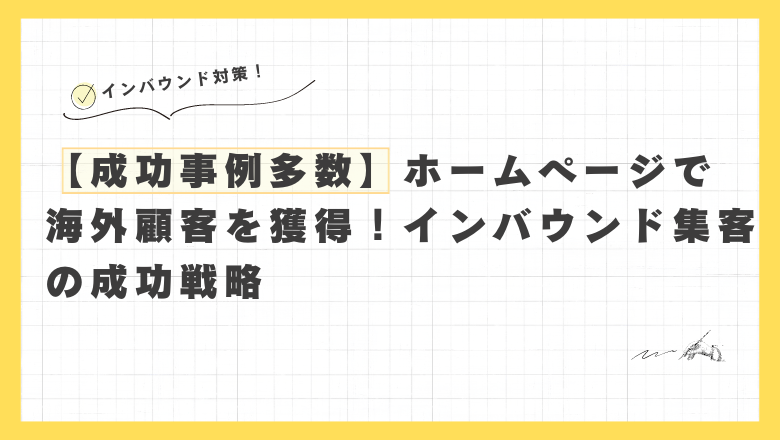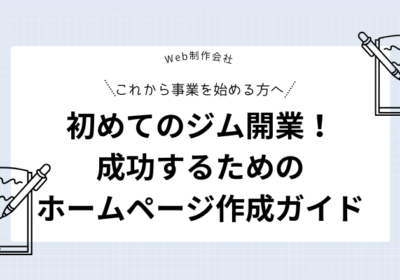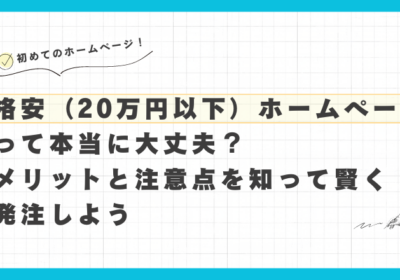Many successful cases】Attracting overseas customers with your website! Successful Strategies for Attracting Inbound Customers

Inbound Attracting Tourists to Japan Effective Use of Your Website
Table of Contents
- 1. the importance of a website in attracting inbound customers
- 1.1 What are inbound measures?
- 1.2 Role of the website in attracting inbound customers
- 1.3 Successful examples of inbound-focused websites
- 2. key points for creating a multilingual website
- 2.1 Why multilingual support is essential
- 2.2 How to choose the right CMS for a multilingual site
- 2.3 How to effectively translate and localize content
- 3. a Google Maps search strategy (MEO) to make your store easier to find
- 3.1 What is MEO?
- 3.2 Basic MEO Measures
- 3.3 Use and Management of Word of Mouth
- 3.4 Use of regional keywords
- 4. languages to be handled by the inbound website
- 5. inbound support! Different color impressions in different cultures and regions
- 5.1 The cultural significance of color and its importance
- 5.2 Impressions and applications of colors by region
- 6. introduction of annual events and timing of travel plans
- 7. SEO for inbound sites
- 7.1 What are the basics of inbound SEO?
- 7.2 SEO Considerations for Multilingual Sites
- 7.3 Keyword Strategy for Foreign Users
- 8. inbound website design and usability
- 8.1 Key design points to be received by foreign tourists
- 8.2 How to improve usability of inbound sites
- 8.3 Importance of mobile-friendly design
- 9. social networking collaboration and inbound marketing
- 9.1 Methods of attracting inbound customers using SNS
- 9.2 How to effectively link inbound websites and SNS
- 9.3 Successful SNS Operations and Factors
- 10. operation and improvement of inbound website
- 10.1 Importance of regular content updates
- 10.2 User Analysis and Improvement Methods
- 10.3 Tips for maintaining an inbound website
1. the importance of a website in attracting inbound customers
1.1 What are inbound measures?
Inbound measures refer to marketing activities targeting foreign tourists and business travelers. The inbound market is growing as demand for tourism and business in Japan increases. Therefore, information dissemination through websites and new ways to attract customers are becoming increasingly important.
1.2 Role of the website in attracting inbound customers
Websites are an important way for foreign tourists to gather information before visiting Japan. For example, when a foreigner planning a trip looks up information on tourist attractions, hotels, and restaurants, it is easier for him or her to become interested in a place if the website is well designed.
We can appeal to more foreigners by providing information on tourist attractions, business hours, prices, and directions in various languages, including English and Chinese.
Also, if the design is easy to view on a smartphone, it will make it easier for foreigners to check the information while on the move, which will encourage them to actually visit the location. Furthermore, a mobile-responsive design is also a must. Since more and more foreigners are accessing the site from their smartphones, a mobile-friendly site will be more effective in attracting visitors.
1.3 Successful examples of inbound-focused websites
I would like to introduce a real-life example from the tourism industry as a successful case study of a website specializing in inbound tourism. For example, the Fushimi Inari Taisha shrine in Kyoto operates a website in many languages, including English, Chinese, and Korean. As a result, access from foreign tourists has been increasing rapidly, and the number of actual visitors has also increased.
The website provides easy-to-understand explanations of the shrine's history, events, and methods of worship, allowing foreigners to grasp information well in advance.
Don Quijote" in Tokyo has also started a multilingual online store so that foreign tourists can buy products even after they return home. In this way, we can attract more customers by creating a website that is easy for foreigners to use.
2. key points for creating a multilingual website
2.1 Why multilingual support is essential
Multilingual support is essential to provide information that is easy for foreign users to understand. When you visit a foreign country, don't you feel a sense of familiarity just by seeing a menu or signboard in Japanese?
Supporting major languages, especially English, Korean, and Chinese, can significantly increase visitor usage. Data shows that sites with multilingual support tend to increase the average time spent by international visitors by more than 30%.
2.2 How to choose the right CMS for a multilingual site
Selecting the right content management system (CMS) is important for efficient multilingual support on your website. For example, we recommend using a CMS such as WordPress or Wix, which offers a wide range of plug-ins and tools for multilingual support, making it easier to manage.
2.3 How to effectively translate and localize content
In addition to translation, it is also important to localize (localize) content to suit the local culture. By using expressions that take into account the culture and customs of the target country or region, rather than simply translating directly, you will gain the trust of your visitors.
For example, Japanese "wabi sabi" this word is unique to Japan. These languages, of course, have their own foreign languages, so it is very important that catchphrases and important messages be modified by native speakers rather than translations.
3. a Google Maps search strategy (MEO) to make your store easier to find
3.1 What is MEO?
MEO (Map Engine Optimization) is an optimization technique to make your store or service more prominent on Google Maps. This is especially important so that local customers and tourists can easily find your store.
By appearing higher when searched on Google Maps, more people are more likely to visit your store.
3.2 Basic MEO Measures
The basics of MEO strategies include preparing your Google My Business information accurately and attractively. For example, accurately entering the store's name, address, and phone number (NAP information), and enhancing its hours of operation, photos, and services will improve its credibility.
It is also important to set up the categories appropriately and to regularly update the latest information.
3.3 Use and Management of Word of Mouth
Reviews are one of the factors that can greatly affect your ranking in Google Maps search results. The more highly rated a restaurant is, the more likely it is to appear higher in the search results.
By not only asking customers for reviews, but also by politely replying to the reviews you receive, you can increase your restaurant's credibility.
Be especially proactive in responding to word of mouth from foreign tourists, as it can have a significant impact on other tourists.
3.4 Use of regional keywords
Using keywords that include the name of a region will make it easier for your store to appear in search results in a specific area. For example, by including regional keywords such as "Shinjuku Cafe" or "Shibuya Ramen" in your Google My Business description or post, you can promote your store to users searching in that area.
This makes your store easier to find for local customers and tourists.
4. languages to be handled by the inbound website
First, we strongly recommend that you create a website in English. This is because only a limited number of people in the world can understand Japanese, and most foreigners are unfamiliar with the language. Therefore, English is the most accessible language to the largest number of people and is very effective as an inbound website.
In fact, it is estimated that about 20% of the world's population can understand English, especially most foreigners visiting for tourism and business purposes.
In addition to English, Korean and Chinese language support is also recommended. This is because most tourists visiting Japan come from Korea and China. According to data from the Japan National Tourism Organization (JNTO), approximately 271 TP3T of foreign visitors to Japan in 2019 came from China and 241 TP3T from Korea.
By catering to visitors from these countries, the site can be made more visitor friendly.
However, if the target geographic area is extensive, creating a website in all languages can be very expensive in terms of production and operating costs. Specifically, it consumes significant resources, including time and effort.
Therefore, it would be efficient to focus on major languages such as English, Korean, and Chinese first, and then add other languages as needed while monitoring the effectiveness.
5. inbound support! Different color impressions in different cultures and regions
5.1 The cultural significance of color and its importance
Since colors have different meanings and impressions in different countries and regions, it is important to understand the cultural meaning of colors in your target country when creating an inbound website.
For example, in Japan, white symbolizes cleanliness and purity, but in other countries it may have a different meaning. In some parts of Asia, white may be used as a color for "mourning.
By taking this cultural context into consideration when choosing colors, you will create a positive impression on your visitors.
5.2 Impressions and applications of colors by region
| Region/Country | variety | Cultural Meaning and Impression | Application examples |
|---|---|---|---|
| Japan | white | Cleanliness, purity, holiness | Background of the website and areas where you want to create a clean look. |
| Asia (China) | red | Good luck, prosperity, blessings | Emphasis on celebratory and positive messages |
| Asia (India) | orange | Sacredness, religious importance | Information on religious affairs and traditional events |
| Europe | green | Reliability, safety, serenity | Corporate and public institution websites, areas where you want to create a sense of trust |
| North America | green | Nature, growth, security | Areas for environment-related content and relaxing effects |
| Middle East | money (written before an amount) | Wealth, prosperity, holiness | Introduction of products or religious symbols to create a sense of luxury |
| Africa | yellow | Happiness, energy, light | Lively events and cultural introduction content |
6. introduction of annual events and timing of travel plans
6.1 Introduction to Annual Events and Timing of Travel Plans
In addition to color selection, another important aspect of an inbound-oriented website is the introduction of annual events. In particular, foreign tourists visiting from afar tend to make their travel plans early.
For example, data shows that travelers from the U.S. begin planning about 120 days before their trip. It is very effective to introduce information on annual and seasonal events in Japan to these well-planned travelers.
For example, introducing cherry blossom viewing spots in the spring or foliage viewing spots in the fall can help visitors decide when to travel.
In addition, promoting different seasonal attractions, such as summer festivals or winter illuminations, would add value to the site and attract more visitors.
In this way, information tailored to the time of year in which visitors are interested can help them plan their trip and ultimately increase the effectiveness of attracting visitors.
7. SEO for inbound sites
7.1 What are the basics of inbound SEO?
Inbound SEO refers to devising ways to appear higher in search results in foreign languages. For example, when searching for something on Google, most people only look at the first page of results, right?
Sites on page 4 or 5 are rarely seen. That is why it is so important to appear at the top of the search results.
Specifically, keywords should be chosen based on what words are likely to be searched for in foreign languages, and search engine optimization should be tailored to the region.
7.2 SEO Considerations for Multilingual Sites
SEO for multilingual sites requires appropriate settings for each language. For example, it is important to set the meta tags and URL structure according to the language.
We also use a "Hreflang tag" to ensure that search engines such as Google can correctly understand the language of the page. By using this tag, pages in each language will be correctly registered with the search engines and will appear in the appropriate search results!
7.3 Keyword Strategy for Foreign Users
In your keyword strategy for foreign users, it is important to choose search terms that are appropriate for the country or region in question. For example, it is a good idea to set specific words such as "Tokyo hotels" for people looking for hotels in Tokyo, "Kyoto temples" for people looking for shrines in Kyoto, etc.
Using such a strategy will ensure that you are providing the information your target audience is looking for and will increase traffic to your site.
8. inbound website design and usability
8.1 Key design points to be received by foreign tourists
The layout must be visually appealing and easy to understand to make foreign visitors feel a visually clear and attractive layout is essential for a design that makes foreign visitors feel "This site looks great! For example, a design that is intuitive and easy to understand, using many photos and icons, will be appreciated.
Another key point is to incorporate coloring and design appropriate to the culture of the country. For example, for a Kyoto tourist site, a design that incorporates traditional Japanese taste will make it easier for visitors to feel "This is the Japanese atmosphere! and visitors will be more likely to feel that "This is the Japanese atmosphere!
And it is also important that pages load quickly and are easy to navigate to the next page with ease. This will help visitors get information without stress and increase the likelihood that they will stay on the site for a long time.
8.2 How to improve usability of inbound sites
Usability, or "ease of use," is important for visitors to find a site easy to use. For example, reservation pages for tourist attractions and contact forms should be placed in prominent locations so that anyone can find them quickly.
If foreigners planning a trip to Hokkaido can easily find the ski resort's reservation page, they are more likely to say, "Let's stay here!" it will be easier for them to think "Let's stay here!
The overall structure of the site should also be designed so that visitors can reach the desired information without getting lost. This will allow users to obtain information smoothly and increase site satisfaction.
8.3 Importance of mobile-friendly design
Today, many foreign tourists use smartphones to look up travel information. Therefore, a "mobile-friendly design" that allows sites to be viewed comfortably on smartphones is a prerequisite.
For example, a responsive design will automatically switch to a display that is easy to view on any device. If someone looking for a beach resort in Okinawa can comfortably browse the site on a smartphone while on the train or in town, they will be more likely to say, "Let's go here! will be more inclined to "go here!
In addition, Google research shows that mobile-friendly sites are more likely to appear higher in search results. This makes it easier for more international visitors to find your site.
9. social networking collaboration and inbound marketing
9.1 Methods of attracting inbound customers using SNS
SNS can be used to effectively attract foreign tourists. For example, when you post photos and videos of beautiful tourist attractions on Instagram, travelers from around the world often feel that they are in the right place.
In particular, young people who love to travel often search for information on SNS, and visually appealing content has a great influence. In Tokyo, there are often restaurants where foreigners are queuing up.
When I ask, "How did you find this restaurant?" The answer is usually "social networking sites, especially Instagram and YouTube." One post can have the effect of attracting customers many times over.
9.2 How to effectively link inbound websites and SNS
By successfully linking inbound websites with social networking sites, you can further increase the effectiveness of attracting visitors. For example, it is important to create content that is easily shared on social networking sites, in addition to posting links from social networking sites to your website.
If you create a video showing the attractions of Okinawa's beach resorts and spread it on SNS, YouTube and TikTok/Instagram, many foreigners who see the post will visit your website.
In addition, by placing social networking share buttons on the homepage, users can easily share content with their friends. This will increase the number of visitors than before and naturally trigger the spread of word of mouth.
9.3 Successful SNS Operations and Factors
An example of successful inbound marketing through the successful use of social networking sites is, for example, the case of a tourist destination that used Instagram to significantly increase the number of foreign tourists. The tourist destination regularly posted high-quality visual content showcasing beautiful scenery and local culture.
As a result, the post was shared by many foreign users, making them think "I want to go here! and made them think, "I want to go here! Furthermore, this tourist attraction actively communicated with users, politely replying to their questions and comments to show its friendliness.
Thus, quality content and user interaction are the keys to success.
10. operation and improvement of inbound website
10.1 Importance of regular content updates
Regular content updates are essential to running an inbound website. Providing new information and seasonal event information every three days if possible, or at least once a week if difficult, will help increase repeat visitors.
For example, adding information on the latest foliage spots in Kyoto for the autumn foliage season will make people think, "I will check this site again next season. In addition, sites that are updated frequently are more likely to be highly rated by search engines, and as a result, are more likely to appear higher in search results.
10.2 User Analysis and Improvement Methods
For example, in store operations and restaurants, have you ever wondered, "Where did these people come to know this restaurant?
By analyzing how users are using your website, you can see what kind of people visited your website and from where. For example, with Google Analytics, you can learn more about your customers' gender, where they live, their age, hobbies and interests, as well as which pages on your site are being viewed most often and on which pages users are leaving.
If you have pages with short dwell times, you may need to review the content and design of those pages. For example, if the information is difficult to understand or the design is outdated, users may leave the site quickly.
Improvements in these areas will increase visitor satisfaction and return visit rates.
10.3 Tips for maintaining an inbound website
Regular maintenance is necessary to keep an inbound website running effectively over the long term. For example, it is important to regularly update software and perform backups as a security measure.
It is also important to optimize images and remove unnecessary plug-ins to improve site display speed. By keeping up with such maintenance, you can keep your site's performance optimal at all times and expect it to consistently attract visitors over the long term.
summary
Inbound websites are an important window for foreign visitors to learn about Japan's attractions. Therefore, site design, usability, integration with SNS, and regular maintenance will increase visitor satisfaction and maximize the effectiveness of attracting visitors.
In particular, incorporating multilingual support and mobile-friendly design will encourage access from around the world and make your site the site of choice for international visitors.
The key to success is to continue to constantly improve your website while incorporating the latest trends and technologies. To maximize the effectiveness of inbound marketing, please keep these points in mind and make your website attractive and easy to use. We hope you will continue to take steps to convey the wonders of Japan to the world.
Q&A Frequently asked questions about inbound website
Q1: Which languages should be supported on an inbound website?
The first step is to make sure that English is supported. English is widely understood throughout the world and is an accessible language for foreigners for both tourism and business purposes. Korean and Chinese are also recommended to be supported since there are many tourists visiting Japan.
Q2: Which CMS (Content Management System) is best suited for a multilingual website?
WordPress, Wix, and other CMSs with plug-ins and tools that enable multilingual support are suitable for this purpose. By using these, you can create a multilingual website efficiently.
Q3: What is mobile-friendly design?
A mobile-friendly design is one that can be comfortably viewed on mobile devices such as smartphones and tablets. Responsive design allows for optimal display according to screen size.
Related Posts

10 recommended web site designers for real estate companies with stylish and easy-to-read designs [with cost comparison chart].
Creation of a website for a real estate company...

Beginner's Guide to Opening Your First Gym! A Guide to Creating a Successful Website
For Beginners] Opening Your First Gym...

Is it really safe to order cheap website design? Know the advantages and cautions and order wisely!
Cheap website development is really...
